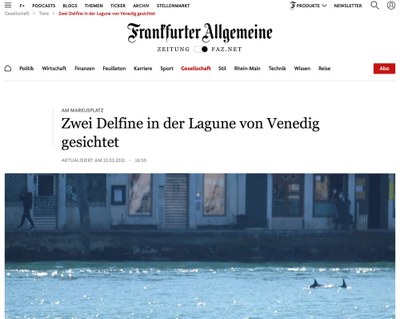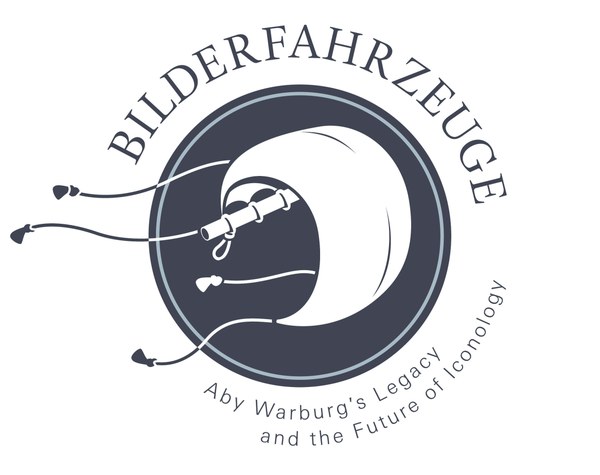Call for Papers // Digital realities: political imagery and mediatized nature in times of Covid-19
Since the outbreak of the Covid pandemic, public life has increasingly shifted to the digital realm, with events taking place online and on shared screens - with individuals isolated from each other, sitting at home at their computers.
With this primacy of the visual, the associated digital images are increasingly becoming contemporary documents that reflect the debates and the use of pictorial rhetoric. As visual records, they are just as ephemeral as posters and banners in urban spaces, protest signs at demonstrations and the ubiquitous social distancing notices. However, the suddenness of this global shift brought on by the virus has led to new types of ephemeral images: Cartoons and children's drawings of the (invisible) virus, photographs of empty cities, lonely squares devoid of public life, protest signs posted online as digital forms of strike and political self-portraits of activist groups, charts of daily cases and vaccination rates and expressions of solidarity.
Though here, too, the majority of these images will disappear, be forgotten and only a selection will remain in the collective consciousness and interest. And yet it is precisely these images that shape our specific era, steer debates and determine public opinion in crucial fields with socio-social, political and ecological issues.
Museums have started to collect relevant visual documents and objects following the outbreak of the pandemic. The Finnish National Museum began with interviews and photo documentation as early as mid-March 2020. Soon after, London's Victoria & Albert Museum chose contemporary objects from the Corona Crisis in digital image form as "rapid response collecting". Artists too have reflected these motifs and their narratives.
The current online images are new in their technology, mediation and reception and at the same time are part of an increasing development of mass images since the emergence of modernity in the 19th century. From lithography and engravings used in illustrated newspapers to photography, film and television, ephemeral images have increasingly determined our everyday visual culture. With the printed newspaper image as one of the most authoritative forms of public ephemera in the 19th century, Aby Warburg collected and evaluated international dailies in about 1914-18. Libraries, archives and databases have long preserved these forms of temporary publications, magazines and written press testimonies as historical documents. Now, images circulating online, are distributed by the millions on various social media platforms, liked, linked with popular hashtags and commented on, thus achieving broad visibility. Often they are quickly deleted again, blocked and overlooked. Image motifs and visual strategies from the past are handed down, appropriated and further developed. The workshop will therefore focus on the characteristics of these new image forms and their contextualisation.
In view of the digital nature of images prevalent today, questions about the recipient-specific accessibility, authenticity, algorithmically determined filtering and technological availability as well as options for counteracting this ephemeral character through storage and documentation of their historicity are all the more urgent. In our reality of algorithms, the same regimes of standardised visibility must also be critically questioned and the references to history derived.
The following questions serve as orientation and define the thematic field to be discussed: Which (new) categories of ephemeral images and image stereotypes have emerged that allow a reflection of our pandemic reality, depict it, comment on it or even co-determine it? What is their inherent power of effect and at the same time their potential for resistance, and what status do they occupy in our image-oriented culture? How can the relationship between text and image be described? Who are the producers of these images and how can their distribution infrastructures be analysed?
Their global dissemination often lends them credibility, without strategies of verification being applied or even existing to critically counter disinformation. This (apparent) promise of images in the Anthropocene is evidenced, among other things, by the photograph of dolphins sighted in Venice's canals that went viral as a sign of a reconquest by animals of nature and spaces dominated by humans in March 2020, although these photographs were not taken in the lagoon, as an identification of still images subsequently revealed. One pandemic year, and thus one year with significantly reduced tourism and traffic later, the news again featured headlines on dolphins seen in Venice, this time verified by several photographs. In view of the worldwide spread of disinformation and conspiracy theories, "false news" and "deep fakes" increasingly determine our society - a phenomenon that the workshop would also like to address.
The focus will be on digital ephemera in times of Covid-19, as several current political crises such as the pandemic, social fractures, and climate change, along with its narratives, collide here. These range from virtual protests to a changed perception of nature and the pandemic’s disruption of global everyday life to questions of disinformation. Using concrete examples of images, we will discuss the emergence of a time-specific political-ecological iconography and what influence this has on the ubiquitous generation and distribution of digital (moving) images as images and representatives of pandemic reality.
The workshop will take place on 15 and 16 December 2021 at the Zentralinstitut für Kunstgeschichte and will be organised by Steffen Haug (Bilderfahrzeuge, Warburg Institute London) and Ursula Ströbele (Study Center for Modern and Contemporary Art, ZI München).
Proposals for papers of 20 min each in GERMAN or ENGLISH (max. 2000 characters, incl. spaces), a short curriculum vitae and contact details should be sent to u.stroebele@zikg.eu and haug@bilderfahrzeuge.org by July 11th. The languages of the workshop are German and English. Participants will be reimbursed for accommodation and travel costs of a second-class intra-European train journey, subject to the current restrictions. As a hybrid format, contributions by speakers may be included via video conference.
[Caption: Frankfurter Allgemeine, 22 March 2021, online access (19 May 2021)]


